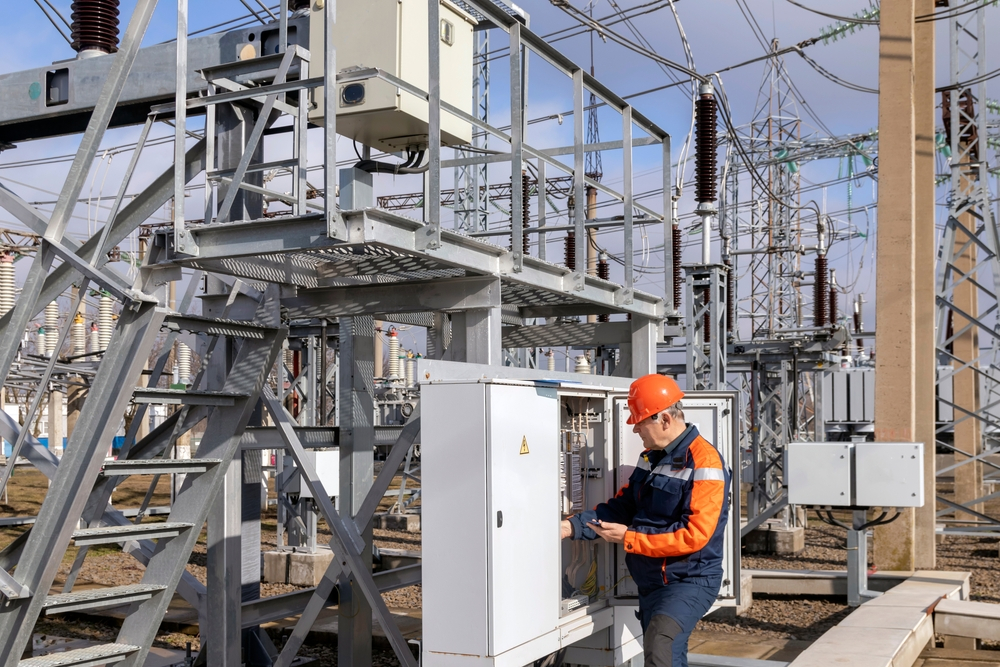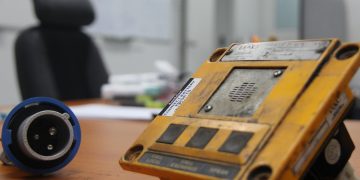The Best Strategy To Use For Roar Solutions
The Best Strategy To Use For Roar Solutions
Blog Article
Not known Facts About Roar Solutions
Table of Contents3 Easy Facts About Roar Solutions ShownThe Only Guide for Roar SolutionsThe Best Guide To Roar Solutions
In order to shield installations from a potential surge a method of analysing and identifying a possibly hazardous location is called for. The function of this is to guarantee the right choice and setup of devices to inevitably prevent a surge and to guarantee safety and security of life.
(https://www.merchantcircle.com/blogs/roar-solutions-miami-fl/2024/12/Empowering-You-with-EEHA-Courses-and-First-Aid-Expertise/2864288)
No equipment must be installed where the surface area temperature level of the devices is higher than the ignition temperature of the offered hazard. Below are some usual dirt hazardous and their minimal ignition temperature. Coal Dust 380C 225C Polythene 420C (melts) Methyl Cellulose 420C 320C Starch 460C 435C Flour 490C 340C Sugar 490C 460C Grain Dust 510C 300C Phenolic Material 530C > 450C Aluminium 590C > 450C PVC 700C > 450C Residue 810C 570C The possibility of the danger existing in a concentration high enough to cause an ignition will differ from place to area.
In order to classify this danger an installment is separated right into locations of risk relying on the quantity of time the hazardous exists. These locations are described as Areas. For gases and vapours and dirts and fibres there are 3 areas. Area 0 Zone 20 A harmful ambience is highly likely to be existing and may exist for extended periods of time (> 1000 hours annually) and even constantly Zone 1 Zone 21 A dangerous atmosphere is possible but not likely to be existing for extended periods of time (> 10 450 C [842 F] A category of T6 implies the minimum ignition temperature level is > 85 C [185 F] Harmful area electric tools maybe developed for use in greater ambient temperatures. This would showed on the ranking plate e.g. EExe II C T3 Ta + 60C( This means at 60C ambient T3 will not be gone beyond) T1 T1, T2, T3, T4, T5, T6 T2 T2, T3, T4, T5, T6 T3 T3, T4, T5, T6 T4 T4, T5, T6 T5 T5, T6 T6 T6 A T Class score of T1 means the optimum surface temperature created by the tool at 40 C is 450 C. Assuming the associated T Course and Temperature level ranking for the equipment are appropriate for the area, you can always make use of a tool with a more strict Department score than needed for the location. There isn't a clear response to this concern. It actually does depend on the sort of devices and what repairs require to be accomplished. Devices with certain examination treatments that can't be carried out in the field in order to achieve/maintain third event score. Must return to the manufacturing facility if it is prior to the equipment's solution. Area Repair Work By Authorised Personnel: Challenging testing may not be required nevertheless certain treatments may require to be followed in order for the equipment to keep its third event score. Authorized personnel should be used to execute the work appropriately Repair work need to be a like for like replacement. New part have to be thought about as a straight substitute requiring no unique screening of the tools after the repair is total. Each item of tools with a harmful rating need to be assessed separately. These are described at a high degree listed below, but also for even more detailed details, please refer straight to the guidelines.
More About Roar Solutions
The devices register is a comprehensive database of equipment records that consists of a minimum check out this site set of fields to determine each product's place, technological criteria, Ex category, age, and ecological information. This details is important for tracking and taking care of the equipment properly within unsafe areas. In contrast, for periodic or RBI sampling evaluations, the quality will be a combination of In-depth and Close examinations. The ratio of Thorough to Close examinations will be established by the Devices Risk, which is evaluated based on ignition threat (the possibility of a resource of ignition versus the chance of a combustible atmosphere )and the dangerous location category
( Area 0, 1, or 2). This variant will likewise influence the resourcing requirements for job preparation. When Whole lots are defined, you can create sampling plans based upon the sample size of each Whole lot, which refers to the variety of random tools things to be examined. To identify the needed example dimension, 2 facets require to be evaluated: the size of the Whole lot and the group of evaluation, which shows the degree of initiative that ought to be used( lowered, normal, or enhanced )to the assessment of the Great deal. By combining the category of examination with the Whole lot dimension, you can after that develop the ideal denial standards for a sample, meaning the allowable variety of damaged products found within that sample. For more details on this process, please describe the Power Institute Guidelines. The IEC 60079 typical suggests that the maximum interval in between evaluations need to not surpass 3 years. EEHA evaluations will certainly likewise be performed beyond RBI projects as component of arranged upkeep and tools overhauls or repair work. These inspections can be credited toward the RBI sample sizes within the impacted Whole lots. EEHA assessments are conducted to identify faults in electric tools. A heavy scoring system is vital, as a solitary item of devices may have numerous mistakes, each with differing degrees of ignition risk. If the combined rating of both examinations is less than twice the mistake rating, the Great deal is deemed acceptable. If the Lot is still considered inappropriate, it must undergo a complete inspection or justification, which might activate stricter evaluation procedures. Accepted Whole lot: The root causes of any kind of faults are identified. If a typical failure setting is found, additional devices might call for assessment and repair. Faults are classified by seriousness( Safety, Integrity, House cleaning ), making sure that urgent issues are analyzed and attended to without delay to mitigate any type of effect on security or procedures. The EEHA database need to track and record the lifecycle of mistakes in addition to the rehabilitative actions taken. Applying a durable Risk-Based Inspection( RBI )method is important for making sure conformity and safety and security in handling Electric Equipment in Hazardous Areas( EEHA) (eeha training). Automated Fault Scoring and Lifecycle Monitoring: Effortlessly manage faults and track their lifecycle to enhance inspection precision. The intro of this support for risk-based assessment further reinforces Inspectivity's position as a best-in-class service for governing compliance, along with for any asset-centric assessment usage case. If you have an interest in discovering more, we invite you to ask for a demonstration and discover how our remedy can transform your EEHA monitoring procedures.
Roar Solutions for Dummies

In terms of explosive danger, a dangerous area is an atmosphere in which an eruptive atmosphere is present (or might be anticipated to be present) in quantities that require special precautions for the building and construction, installment and use equipment. eeha training. In this short article we explore the obstacles encountered in the workplace, the danger control measures, and the called for expertises to function safely
It issues of contemporary life that we make, keep or deal with a variety of gases or fluids that are deemed combustible, and a variety of dusts that are regarded flammable. These compounds can, in specific conditions, create explosive atmospheres and these can have significant and unfortunate consequences. Many of us are familiar with the fire triangular remove any among the 3 aspects and the fire can not happen, however what does this mean in the context of harmful areas? When damaging this down into its simplest terms it is basically: a mix of a particular amount of launch or leak of a specific compound or product, blending with ambient oxygen, and the visibility of a resource of ignition.
In a lot of circumstances, we can do little about the levels of oxygen airborne, however we can have considerable influence on resources of ignition, for example electrical tools. Unsafe areas are documented on the hazardous location classification illustration and are determined on-site by the triangular "EX" sign. Here, among various other crucial information, zones are divided into three kinds relying on the threat, the probability and period that an eruptive environment will certainly exist; Zone 0 or 20 is regarded the most unsafe and Zone 2 or 22 is regarded the least.
Report this page